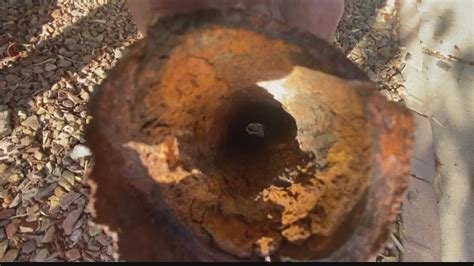The orangeburg pipe lawsuit has become a significant legal matter as homeowners and municipalities seek justice against the manufacturers of Orangeburg pipes. These pipes, made from a mixture of wood fibers and pitch, were widely used in the mid-20th century but have since been found to be prone to failure and deterioration. If you are affected by this issue or want to understand more about the legal landscape surrounding Orangeburg pipes, here are five critical facts you need to know.
1. What Are Orangeburg Pipes?
Understanding Orangeburg Pipes in the Context of the Orangeburg Pipe Lawsuit
Orangeburg pipes were introduced in the late 1940s as a cheaper alternative to traditional clay and cast-iron pipes. These pipes were primarily used for sewer systems and drainage due to their lightweight and easy installation properties.
- Composition: Made from a combination of wood pulp and phenolic resin, Orangeburg pipes were designed to be durable. However, the reality has been quite different.
- Lifespan Issues: Homeowners and municipalities have reported that these pipes deteriorate much faster than anticipated, often leading to clogs and collapses.
This deterioration has sparked a rise in lawsuits, leading to the ongoing orangeburg pipe lawsuit that targets manufacturers and distributors of these pipes.
2. Legal Claims in the Orangeburg Pipe Lawsuit
Key Legal Aspects of the Orangeburg Pipe Lawsuit
The orangeburg pipe lawsuit focuses on several key legal claims:
- Negligence: Plaintiffs allege that manufacturers knew or should have known about the defects in Orangeburg pipes but failed to warn consumers.
- Breach of Warranty: Homeowners argue that they were sold defective products that did not meet the promised standards of quality and durability.
- Fraudulent Misrepresentation: Many plaintiffs contend that they were misled about the longevity and performance of Orangeburg pipes when making their purchasing decisions.
These claims form the basis of the legal actions being pursued in various courts across the country.
3. Who Can File a Claim?
Eligibility for the Orangeburg Pipe Lawsuit
Individuals and entities that have experienced issues with Orangeburg pipes may be eligible to join the orangeburg pipe lawsuit. Here’s who can typically file a claim:
- Homeowners: Those who have had Orangeburg pipes installed in their properties and have faced issues such as leaks or blockages.
- Municipalities: Cities or towns that used Orangeburg pipes in their sewer systems and have incurred costs related to repairs and replacements.
- Contractors: Professionals who installed Orangeburg pipes and faced financial losses due to defective materials may also have grounds for a lawsuit.
If you fall into one of these categories, it is essential to consult with a legal professional experienced in handling orangeburg pipe lawsuits.
4. The Process of Filing a Lawsuit
Steps to Initiate an Orangeburg Pipe Lawsuit
Filing a lawsuit regarding Orangeburg pipes involves several key steps. Here’s an elaborated overview of the process:
- Consultation with an Attorney: The first step is to consult with an attorney who specializes in construction defects or consumer protection. They can help assess your case and determine eligibility for the orangeburg pipe lawsuit.
- Gathering Evidence: Collect all relevant documentation, including installation records, photographs of the damage, and any maintenance records. This evidence will support your claims.
- Filing the Complaint: Your attorney will file a complaint in the appropriate court, outlining the specifics of your case and the legal claims being made.
- Discovery Phase: Both parties will exchange information and evidence during the discovery phase. This process can take several months and may involve depositions and interrogatories.
- Settlement or Trial: Many orangeburg pipe lawsuits settle out of court, but if a fair agreement cannot be reached, your case may proceed to trial.
- Judgment: If the case goes to trial, a judge or jury will determine the outcome, including any damages awarded to the plaintiffs.
By following these steps and working with an experienced attorney, you can navigate the orangeburg pipe lawsuit process effectively.
5. Potential Outcomes and Damages
What to Expect from the Orangeburg Pipe Lawsuit
The potential outcomes of the orangeburg pipe lawsuit can vary widely depending on the specifics of each case. Here are some possible results:
- Compensatory Damages: Plaintiffs may receive compensation for repair costs, property damage, and other losses resulting from the faulty pipes.
- Punitive Damages: In cases of gross negligence or fraudulent behavior, punitive damages may be awarded to deter future misconduct by manufacturers.
- Class Action Settlements: Some cases may lead to class action lawsuits, allowing multiple plaintiffs to combine their claims, potentially resulting in a larger settlement for affected homeowners and municipalities.
The exact damages awarded will depend on the circumstances of each individual case and the strength of the evidence presented.
FAQ
What are the signs of failure in Orangeburg pipes?
Common signs of failure in Orangeburg pipes include frequent clogs, slow drainage, sewage backups, and visible sagging in the pipe structure. Homeowners experiencing these issues should investigate further and consult professionals.
How long do I have to file an Orangeburg pipe lawsuit?
The time limit for filing a lawsuit varies by state, typically ranging from one to six years. It is crucial to consult with a legal expert as soon as you suspect problems with your Orangeburg pipes to ensure you meet the deadlines for filing.
Can I join a class action lawsuit for Orangeburg pipes?
If multiple homeowners in your area have experienced similar issues with Orangeburg pipes, you may be eligible to join a class action lawsuit. Consult an attorney to determine the best course of action.
Is there a cost to file an Orangeburg pipe lawsuit?
Many attorneys offer a contingency fee arrangement, meaning they only get paid if you win your case. However, it’s essential to clarify the fee structure with your attorney before proceeding.
Where can I find more information about the Orangeburg pipe lawsuit?
For more information, you can visit legal websites such as Nolo or consult with a local attorney who specializes in consumer protection or construction law.
Conclusion
The orangeburg pipe lawsuit is a significant legal matter for homeowners and municipalities affected by the deterioration of these once-popular pipes. By understanding the critical facts outlined in this article, you can make informed decisions regarding your rights and options. If you believe you have a case, consult with a qualified attorney to explore your potential legal recourse.
Read more:









